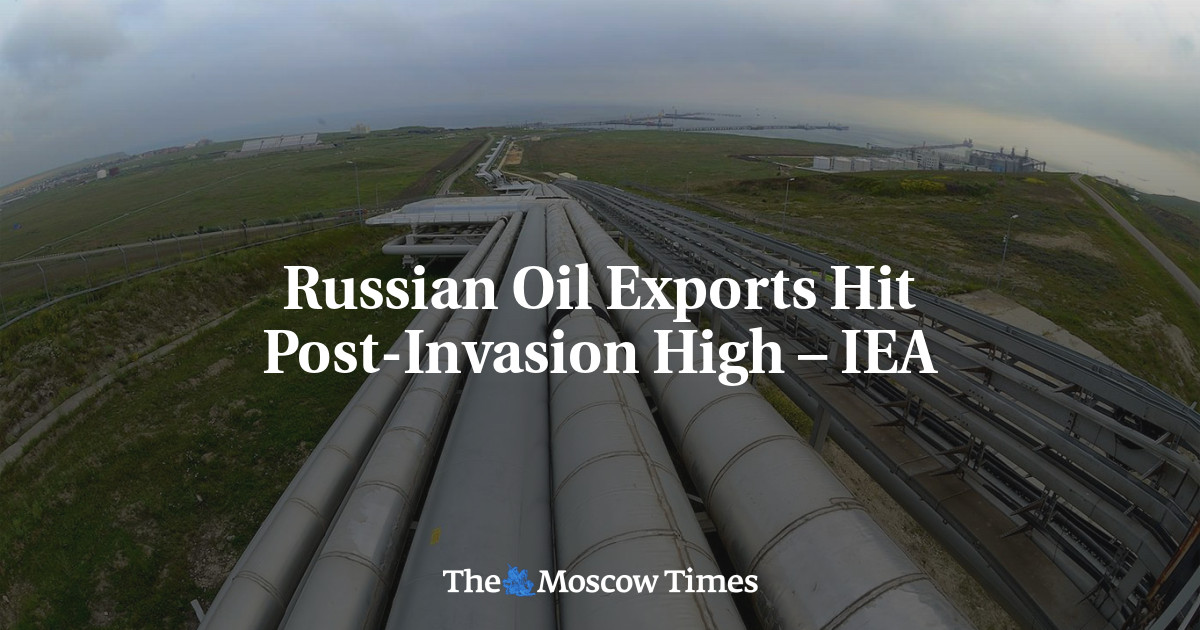Russia exported more oil in April than in any month since its full-scale invasion of Ukraine last year, with almost 80 per cent of crude shipments flowing to China and India, according to the International Energy Agency.
Russian oil exports edged up another 50,000 barrels a day in April to a post-invasion high of 8.3mn b/d, far exceeding the 7.7mn b/d and 7.5mn b/d that it averaged in 2022 and 2021 respectively.
The rise in shipments reflects Moscow’s success in finding both new buyers for its oil since Europe blocked imports and new vessels after its access to western shipping was restricted.
Since the west first threatened Russia with sanctions last year, Moscow has worked with a growing number of little-known trading companies and tanker-owners to develop new systems to move its oil.
“Russia seems to have few problems finding willing buyers for its crude and oil products,” the IEA said in a monthly oil report on Tuesday.
The EU is discussing its 11th sanctions package on Russia since its invasion of Ukraine last year. The bloc has sanctioned 1,473 Russian individuals and 207 entities and frozen €21.5bn of Russian assets.
However, those measures have been designed to allow Russian oil to continue flowing to countries outside the EU. The result has been one of the biggest shifts in commodity flows, with Moscow rerouting millions of barrels a day of oil from Europe to Asia over the past 12 months.
Despite shipping more oil than in April 2022, Russia’s monthly oil export revenues were 27 per cent lower than last year, according to IEA estimates, partly because of lower global energy prices.
Russian oil has also been trading at a discount to global benchmarks because of a G7-led price cap on permitted Russian exports of oil and refined petroleum products imposed in December and February respectively.
However, that discount has begun to narrow, the IEA said, as Russia has increased its access to non-western shipping able to operate outside of the price caps. Moscow’s oil export revenues in April were $15bn, up from $13.3bn in March, according to the IEA’s estimates.
In total Russia shipped 5.2mn b/d of crude in April, the most since May 2022, including 2.1mn b/d to China and 2mn b/d to India. Total exports of refined petroleum products were 3mn b/d.
“New refining capacity is driving a continued shift east in forecast crude runs for the remainder of the year, mirroring regional demand strength,” the IEA said.
Imports from Russia had helped meet rising oil demand in China, which hit an all-time high of 16mn b/d in March, the IEA added. “China’s demand recovery continues to surpass expectations,” it said.
In response, the IEA increased its forecast for 2023 global oil demand growth to 2.2mn b/d, adding that China would account for nearly 60 per cent of the increase.
The fall in global oil prices in April and early May, when Brent crude, the global benchmark, fell by nearly $16 a barrel in just two weeks, stood in “stark contrast” to the tighter market expected in the second half of the year, it said.
Russian oil exports hit post-invasion high



